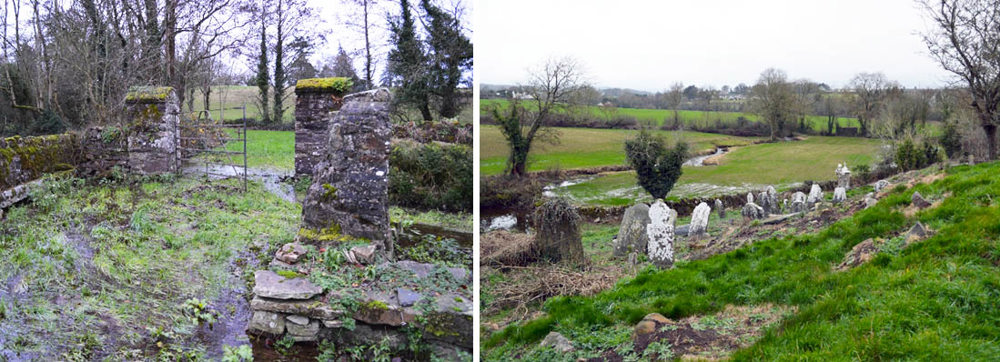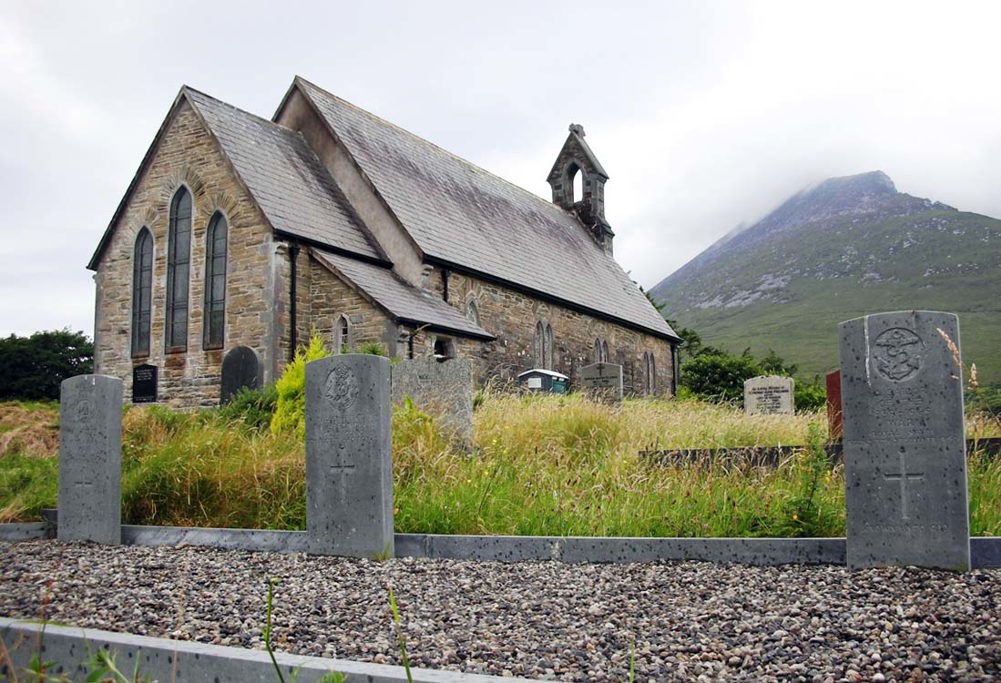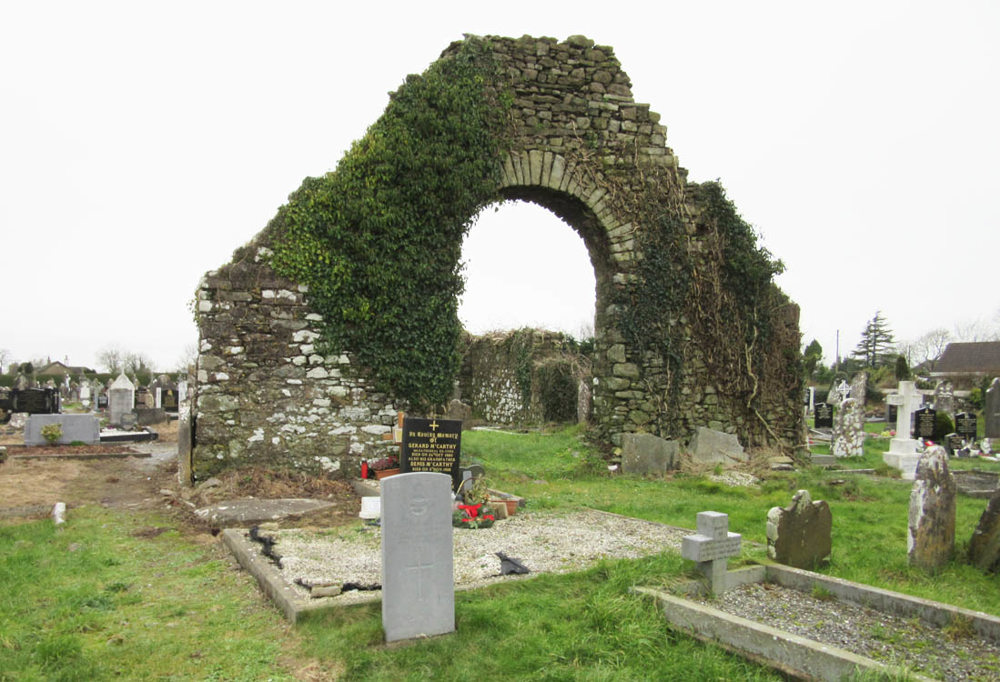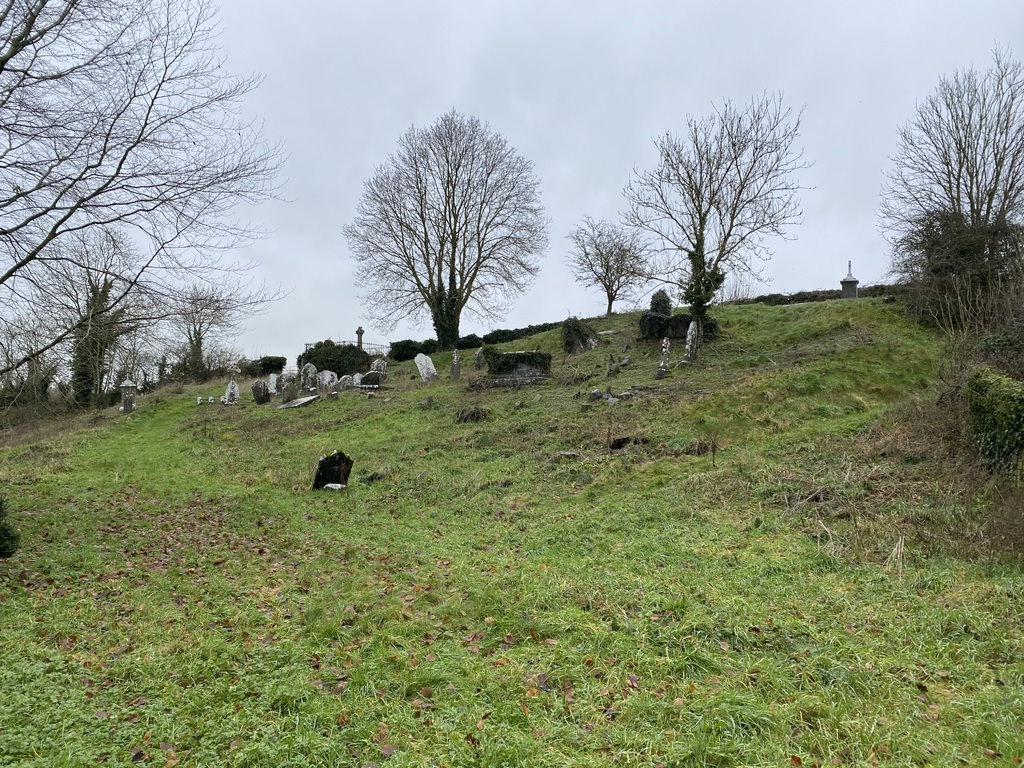Colmcille's Graveyard
- Country Ireland, Republic of
- Total identified casualties 2 Find these casualties
- Region County Kilkenny
- Identified casualties from First World War
- GPS Coordinates Latitude: 52.53158, Longitude: -7.12317
Our one man in Ireland

Colmcille's Graveyard
Location: County Kilkenny, Ireland Language: English / Irish Altitude: 34m Rainfall: 879mm
Temperature: -3°c - 21°c Biggest challenge: War graves in disused churchyards
Ireland is a delicate place to work for an organisation that calls on people to look back on their history.
Even just half a generation ago, we would not have received the strength of goodwill that we do today. On our new regional manager’s first weekend in post, he was invited to a Remembrance Sunday commemoration ceremony at Glasnevin War Cemetery in Dublin.
There he heard a poignant and powerful speech by the President of the Irish Republic Michael D. Higgins calling for all victims of the World Wars to be commemorated and remembered.
As with elsewhere, the work at hand here is about preserving a slice of heritage and allowing simple acts of individual remembrance.
Our commitment here is sparse but no less important for it. Around a fifth of the war graves in the Republic of Ireland alone are on the grounds of churches which have since closed, become heritage sites or have found alternative use.

The flooded entrance to Colmcille's Graveyard and weathering to the civilian headstones typical of disused churchyards containing war graves.
Some, like Colmcille’s Graveyard in County Kilkenny, are over a kilometre away from the nearest road. The only access takes you through muddy tracks and horse fields, making any visit feel like a voyage of discovery.
The day-to-day maintenance in the Republic of Ireland is done on the Commission’s behalf by the Office of Public Works with whom we have been in partnership with for many decades. Without the need for gardening staff, we have only one employee permanently based there.
It’s Malcolm Ross’s job to inspect the work and, more importantly, maintain and build the hundreds of local relationships that have kept our 5,500 war graves in order, across more than 1,000 locations.

Rural war graves such as these in Dugort, County Mayo, often boast dramatic backdrops.
“If the topic comes up when I meet someone new, I make it clear I’m not here to talk politics or religion, we have one job to do and I always open conversations with the simple task at hand.”
Malcolm then needs to deal with the sheer variety that comes from being our one man on the island.
“One day I can be hiking around muddy fields, talking to farmers and trying to find a remote headstone in rural Offaly, the next I’m at a black-tie reception in central Dublin greeting ambassadors and defence attaches.”

A single First World War headstone stands among civilian graves in Kilcommock Old Graveyard.
Reaching the long-abandoned Colmcille’s Graveyard is typical of the rural spots where you can find war graves and war cemeteries here.
There are civilian graves, many showing the family names of the local village, which can be centuries old, carved in distinctive local stone. And among them, mostly made of Irish Blue limestone, are the war graves, our permanent reminders of the war dead.
The history and politics of who and how they fought may remain a delicate matter, but their names are far from forgotten.

Ruins in the grounds of Rathcooney Cemetery, County Kerry, show where the church once stood.
History information
The churchyard is a mile North-East of Thomastown.
There are 2 Commonwealth burials of the 1914-1918 war here.


